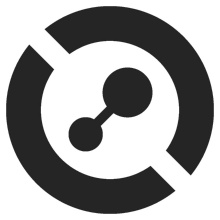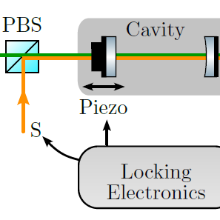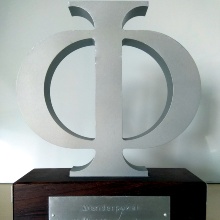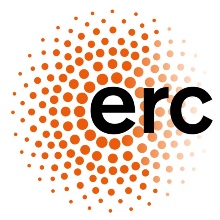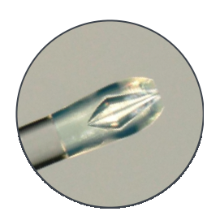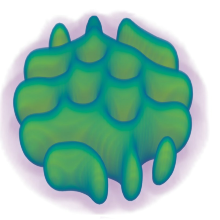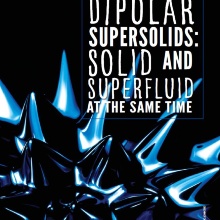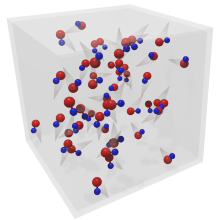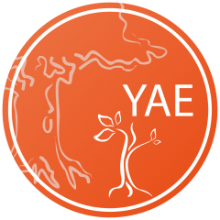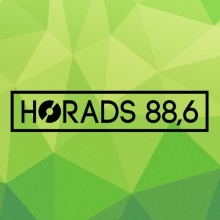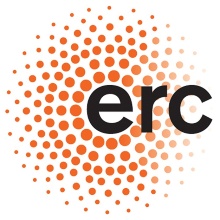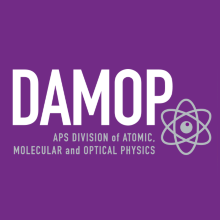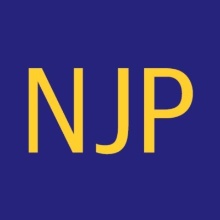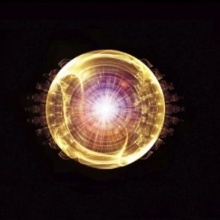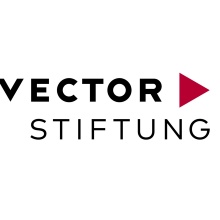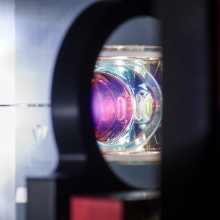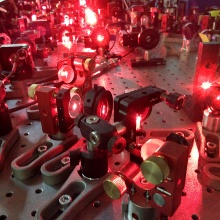Learn more about...
Welcome to the Langen Group
We are currenly in the process of moving to the Atominstitut at TU Wien and the Vienna Center for Quantum Science and Technology. This page will no longer be updated! For the latest news from our lab visit our new website at www.coldmolecules.at.
We explore cold atoms and molecules for quantum science and technology. Our goals include the use of dipolar molecules, to realize new forms of quantum matter and gain insights into the foundations of molecular collisions and chemistry. Moreover, we study molecules that facilitate tabletop precision searches for new physics beyond the Standard Model of particle physics. Finally, we also develop compact experimental setups to manipulate single atoms and molecules for technological applications.
Research
We use laser cooling to bring atoms and molecules to ultracold temperatures. Laser cooling is a very well established technique for atoms, which is used extensively in many labs around the world. It relies on the fact that atoms can repeatedly absorb and emit a large number of photons with the same wavelength. Intuitively, it seems very challenging to also apply this technique to molecules because of their complex level structure, which e.g. includes many rotational and vibrational levels. However, by carefully chosing suitable transitions laser cooling can still be realized for many molecular species.
In addition to our work on cold molecules we also contribute to quantum simulations using ultracold magnetic atoms at the institute, and collaborate with the 4th Physics Institute on trapping of single atoms in 3D-printed optical tweezers.
Publications
Project Publications
2025
- T. Langen, J. Boronat, J. Sánchez-Baena, R. Bombín, T. Karman, F. Mazzanti, Dipolar Droplets of Strongly Interacting Molecules, Physical Review Letters 134 (2025), doi:10.1103/physrevlett.134.053001.
- F. Kogel, T. Garg, M. Rockenhäuser, S. A. Morales-Ramírez, T. Langen, Isotopologue-selective laser cooling of molecules, New Journal of Physics 27, 13001 (2025).
2024
- M. Rockenhäuser, F. Kogel, T. Garg, S. A. Morales-Ramírez, T. Langen, Laser cooling of barium monofluoride molecules using synthesized optical spectra (2024), (available at https://arxiv.org/abs/2405.09427).
- T. Langen, G. Valtolina, D. Wang, J. Ye, Quantum state manipulation and cooling of ultracold molecules, Nature Physics 20, 702–712 (2024).
- K. L. Marroquín, R. Wang, A. Allahverdian, N. Durand-Brousseau, S. Colombini, F. Kogel, J. S. Keller, T. Langen, E. R. Grant, Journal of Plasma Physics, in press, doi:DOI: 10.1017/S0022377823001472.
- M. Rockenhäuser, F. Kogel, T. Garg, S. A. Morales-Ramírez, T. Langen, Laser cooling of barium monofluoride molecules using synthesized optical spectra, arXiv (2024), doi:10.48550/arXiv.2405.09427.
2023
- T. Langen, G. Valtolina, D. Wang, J. Ye, Quantum state manipulation and science of ultracold molecules, arxiv (2023), doi:arxiv:2305.13445.
- E. Pultinevicius, M. Rockenhäuser, F. Kogel, P. Groß, T. Garg, O. E. Prochnow, T. Langen, A scalable scanning transfer cavity laser stabilization scheme based on the Red Pitaya STEMlab platform, Rev. Sci. Instrum. 94, 103004 (2023).
- M. Rockenhäuser, F. Kogel, E. Pultinevicius, T. Langen, Absorption spectroscopy for laser cooling and high-fidelity detection of barium monofluoride molecules, Phys. Rev. A 108, 62812 (2023).
2022
- J. Fraxanet, D. Gonzalez-Cuadra, T. Pfau, M. Lewenstein, T. Langen, L. Barbiero, Topological quantum critical points in the extended Bose-Hubbard model, Phys. Rev. Lett. 128, 43402 (2022).
- M. Schmidt, L. Lassablière, G. Quéméner, T. Langen, Self-bound dipolar droplets and supersolids in molecular Bose-Einstein condensates. Physical Review Research. 4 (2022), p. 13235.
- P. Ruchka, S. Hammer, M. Rockenhäuser, R. Albrecht, J. Drozella, S. Thiele, H. Giessen, T. Langen, Microscopic 3D printed optical tweezers for atomic quantum technology, Quantum Science and Technology 7, 45011 (2022).
2021
- F. Böttcher, J.-N. Schmidt, J. Hertkorn, K. S. H. Ng, S. D. Graham, M. Guo, T. Langen, T. Pfau, New states of matter with fine-tuned interactions: quantum droplets and dipolar supersolids, Reports on Progress in Physics 84, 12403 (2021).
- J. Hertkorn, J.-N. Schmidt, M. Guo, F. Böttcher, K. S. H. Ng, S. D. Graham, P. Uerlings, H. P. Büchler, T. Langen, M. Zwierlein, T. Pfau, Supersolidity in Two-Dimensional Trapped Dipolar Droplet Arrays, Physical Review Letters 127, 155301 (2021).
- J. Hertkorn, J.-N. Schmidt, F. Böttcher, M. Guo, M. Schmidt, K. Ng, S. Graham, H. P. Büchler, T. Langen, M. Zwierlein, T. Pfau, Density Fluctuations across the Superfluid-Supersolid Phase Transition in a Dipolar Quantum Gas, Phys. Rev. X 11, 11037 (2021).
- J.-N. Schmidt, J. Hertkorn, M. Guo, F. Böttcher, M. Schmidt, K. S. H. Ng, S. D. Graham, T. Langen, M. Zwierlein, T. Pfau, Roton Excitations in an Oblate Dipolar Quantum Gas, Phys. Rev. Lett. 126, 193002 (2021).
- J. Hertkorn, J.-N. Schmidt, M. Guo, F. Böttcher, K. S. H. Ng, S. D. Graham, P. Uerlings, T. Langen, M. Zwierlein, T. Pfau, Pattern Formation in Quantum Ferrofluids: from Supersolids to Superglasses, Physical Review Research 3, 33125 (2021).
- F. Kogel, M. Rockenhäuser, R. Albrecht, T. Langen, A laser cooling scheme for precision measurements using fermionic barium monofluoride (<sup>137</sup>Ba<sup>19</sup>F) molecules, New Journal of Physics 23, 95003 (2021).
2020
- R. Albrecht, M. Scharwaechter, T. Sixt, L. Hofer, T. Langen, Buffer-gas cooling, high-resolution spectroscopy, and optical cycling of barium monofluoride molecules, Phys. Rev. A 101, 13413 (2020).
- D. Reens, H. Wu, A. Aeppli, A. McAuliffe, P. Wcisło, T. Langen, J. Ye, Beyond the limits of conventional Stark deceleration, Phys. Rev. Research 2, 33095 (2020).
2019
- F. Böttcher, M. Wenzel, J.-N. Schmidt, M. Guo, T. Langen, I. Ferrier-Barbut, T. Pfau, R. Bomb\’ın, J. Sánchez-Baena, J. Boronat, F. Mazzanti, Dilute dipolar quantum droplets beyond the extended Gross-Pitaevskii equation, Phys. Rev. Research 1, 33088 (2019).
- F. Böttcher, J.-N. Schmidt, M. Wenzel, J. Hertkorn, M. Guo, T. Langen, T. Pfau, Transient Supersolid Properties in an Array of Dipolar Quantum Droplets, Phys. Rev. X 9, 11051 (2019).
- M. Guo, F. Böttcher, J. Hertkorn, J.-N. Schmidt, M. Wenzel, H. P. Büchler, T. Langen, T. Pfau, The low-energy Goldstone mode in a trapped dipolar supersolid, Nature 574, 386–389 (2019).
- J.-F. Mennemann, T. Langen, L. Exl, N. J. Mauser, Optimal control of the self-bound dipolar droplet formation process, Computer Physics Communications 244, 205–216 (2019).
2018
- I. Ferrier-Barbut, M. Wenzel, F. Böttcher, T. Langen, M. Isoard, S. Stringari, T. Pfau, Scissors Mode of Dipolar Quantum Droplets of Dysprosium Atoms, Phys. Rev. Lett. 120, 160402 (2018).
- T. Langen, T. Schweigler, E. Demler, J. Schmiedmayer, Double light-cone dynamics establish thermal states in integrable 1D Bose gases, New J. Phys. 20, 23034 (2018).
- H. Wu, D. Reens, T. Langen, Y. Shagam, D. Fontecha, J. Ye, Enhancing radical molecular beams by skimmer cooling, Phys. Chem. Chem. Phys. 20, 11615–11621 (2018).
- T. Langen, M. J. Mark, Ultrakalt magnetisiert, Physik Journal 17, 35 (2018).
2017
- D. Reens, H. Wu, T. Langen, J. Ye, Controlling spin flips of molecules in an electromagnetic trap, Phys. Rev. A 96, 63420 (2017).
- T. Schweigler, V. Kasper, S. Erne, I. Mazets, B. Rauer, F. Cataldini, T. Gasenzer, T. Langen, J. Schmiedmayer, J. Berges, Experimental characterization of a quantum many-body system via higher-order correlations, Nature 545, 323–326 (2017).
Funding
We are currently funded by an ERC Starting Grant, the Baden-Württemberg Stiftung, the Vector Stiftung, the Center for Integrated Quantum Science and Technology (IQST), the MWK Baden-Württemberg, and the University of Stuttgart.
Teaching
Please see the teaching page of the institute.
Team
Project News
Contact
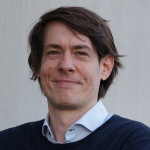
Tim Langen
Prof. Dr.Head of Research Group


